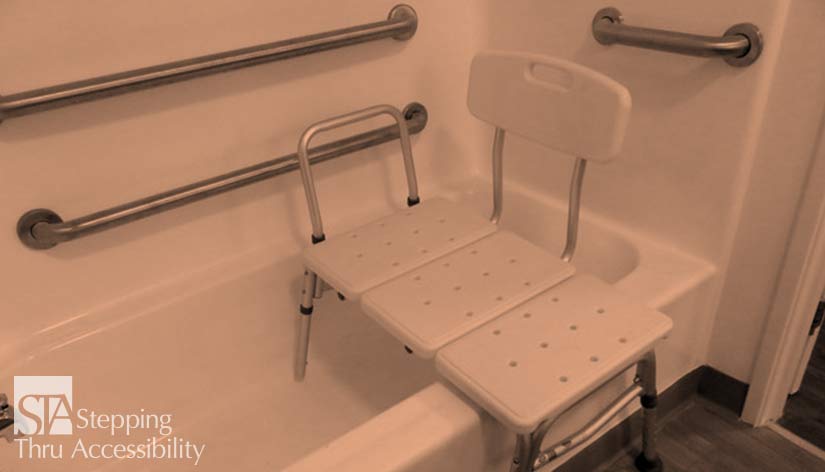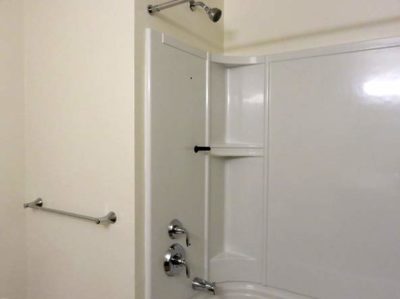Blog
Return to Blog »
Janis Kent, FAIA, Architect, CASp © November, 2021 An item that has come up a number of times is tubs and showers that come with integral manufactured surrounding walls that do not necessarily meet the ADA requirements for grab bars even though the manufacturer states they do. It is important that grab bar blocking and its attachments be engineered to meet the vertical and horizontal force of 250 lbs. This is an important element that should not be left to rule of thumb and should be carefully engineered and tested to meet the exact regulation and code requirements. When specifying these tubs, or showers, with the 3 integral surrounding walls, they may also come with integrated grab bars as an additional component. One would assume the grab bars meet the requirements of ADA. The portion that is easy to verify is, the size and location of the bars. The other aspect not as easily verified, is whether it has the compliant structural strength required for the stresses. The only way to verify this is to ask for the testing that was done on the specific model of tub or shower being specified. I have seen shop drawings state these tubs and showers meet ANSI or ICC A117.1. But the question arises is – what aspect does it comply with? This is not a place to make assumptions. It is a place for ‘show me’. If a grab bar is not engineered and installed correctly, it can result in a life-threatening accident. If the grab bar pulls out of the wall because it is not sufficiently engineered, it is not something we want, particularly on projects we are involved with or on facilities we use. So, what you are requesting the actual testing results showing what was tested, how it was tested, and that the grab bars, attachments, and reinforcement comply. You are looking for evidence that it was tested to meet 250 lbs of force and that this was tested for both vertical and horizontal forces. You are also looking that the grab bar was tested at points along the length of the entire bar and not just in the center. You are looking to verify that it meets the ADA Standards minimum requirements for structural strength. And the testing should show that it does. Below are the actual requirements from the ADA Standards. 609 Grab Bars 609.1 General. Grab bars in toilet facilities and bathing facilities shall comply with 609. 609.8 Structural Strength. Allowable stresses shall not be exceeded for materials used when a vertical or horizontal force of 250 pounds (1112 N) is applied at any point on the grab bar, fastener, mounting device, or supporting structure. Some manufacturers are very forthright with their testing results and some are not. You may find that they provide you with a statement that it meets ADA requirements, but that is not really enough since you do not know what aspects of ADA it complies with. On one project when I finally received the testing results, I found that they only tested the grab bar load (minimum 250 pounds force) at the mid-point of the bar. This means that the load was divided equally between two end support points. But that is not what the requirements are – it states at any point on the grab bar. So if I am applying the 250 pound load to only one end of the grab bar, it is not dispersed evenly across two support points and could fail. Each endpoint should be capable of supporting the entire 250 pound load by itself. The reason that this becomes an issue is that projects usually have a structural engineer of record who calculates the force, and provides the requirements for attachment and blocking to meet the stresses applied, AND they stamp and sign the drawings. When one has a product, you are relying on the manufacturer to understand the regulations, engineer it, and then to test it, showing it complies with specific Standards. This is the testing that shows compliance for structural strength that you want. So, as architects and designers, one needs to do their due diligence particularly when products are not engineered as part of the overall project, but rather purchased instead. Be aware that your local City or County may have additional requirements that are more restrictive than the State or Federal requirements. Also, this article is an interpretation and opinion of the writer. It is meant as a summary – current original regulations should always be reviewed when making any decisions. © Janis Kent, Architect, FAIA, CASp November, 2021 Premium Ebook: Accessibility for Restrooms – A Curated Collection of Articles from the Stepping Thru Accessibility BlogManufactured Tubs & Showers with Integral Surrounding Walls – What Do You Need to Know About Their Grab Bars?



